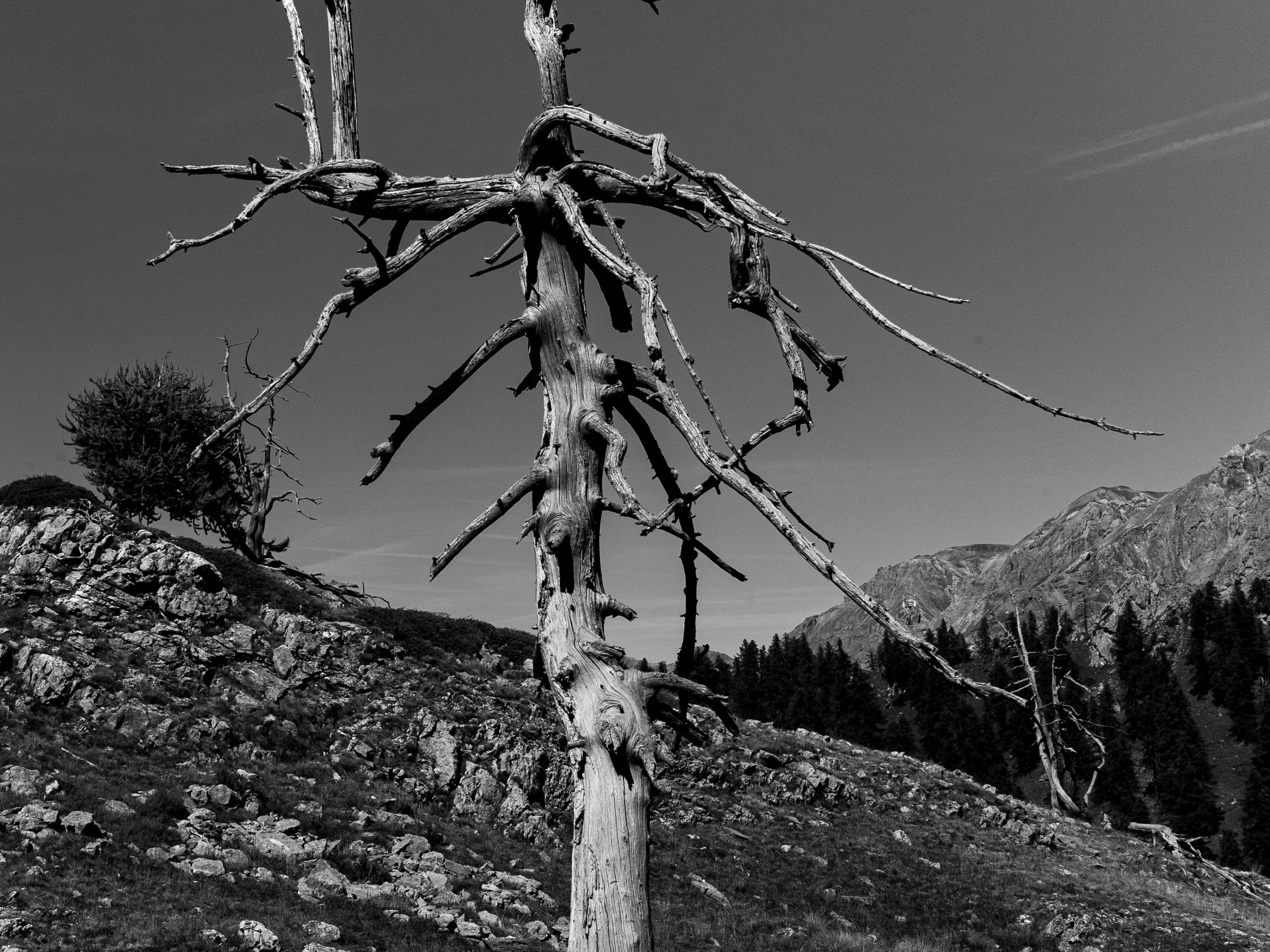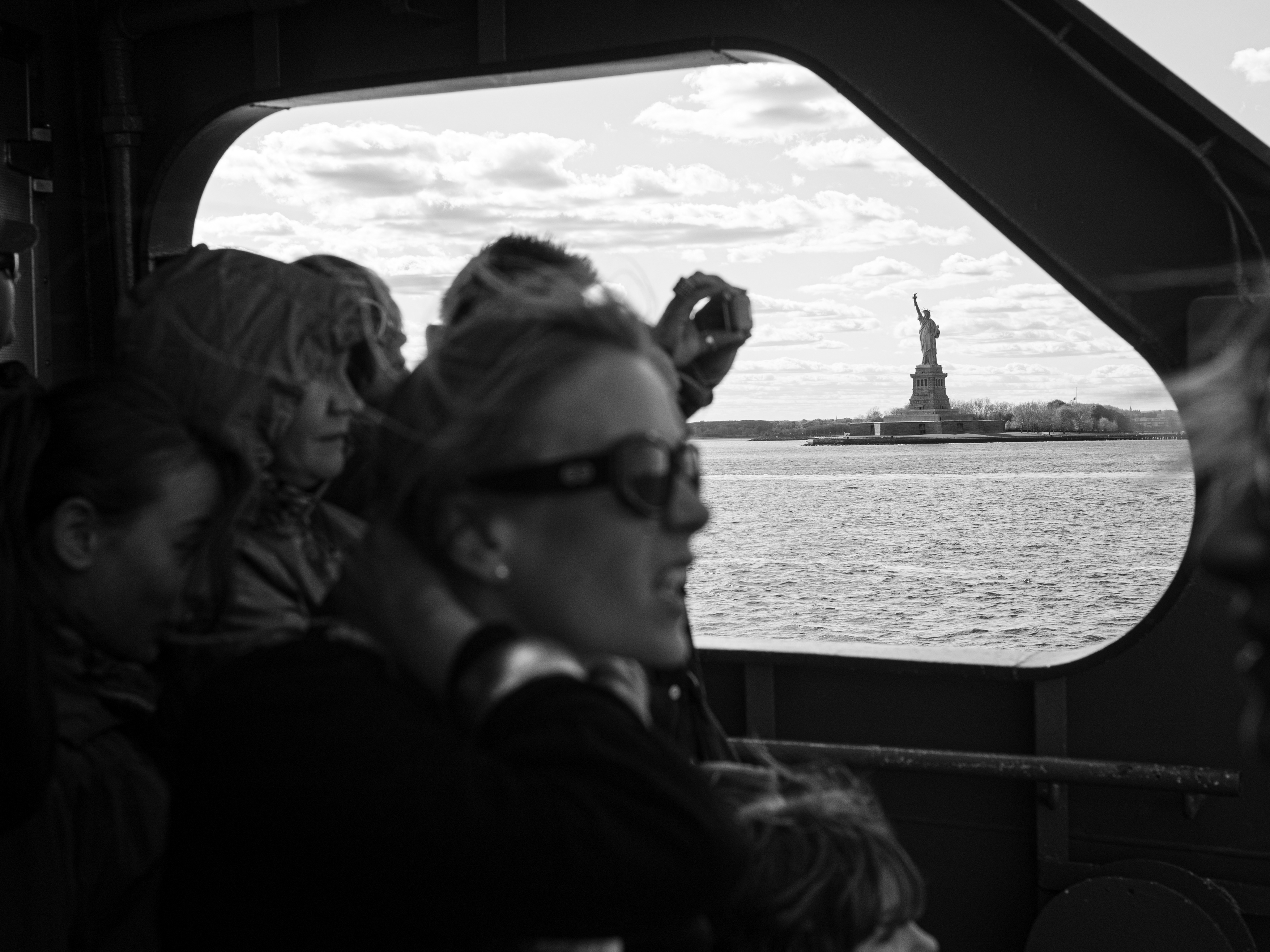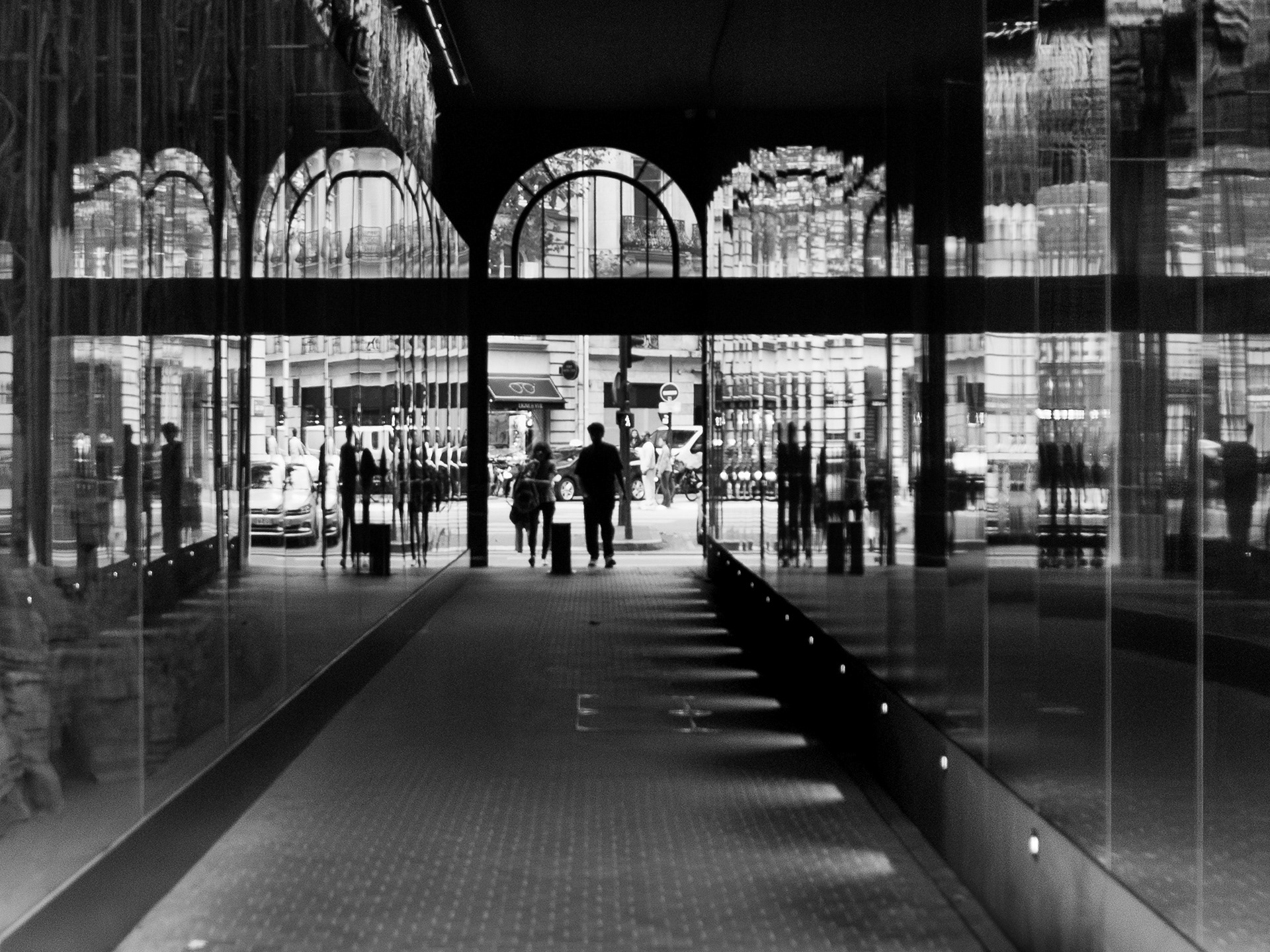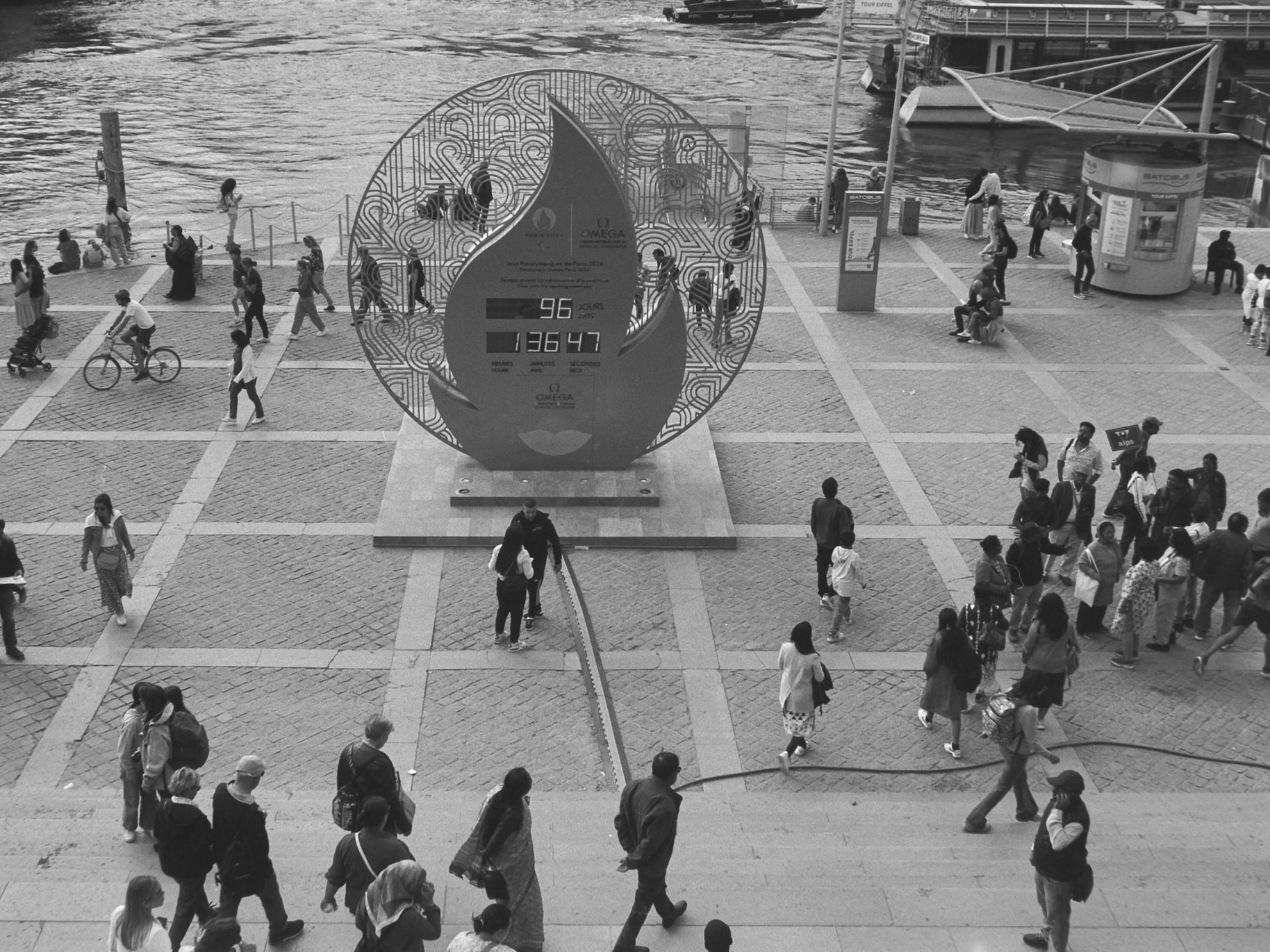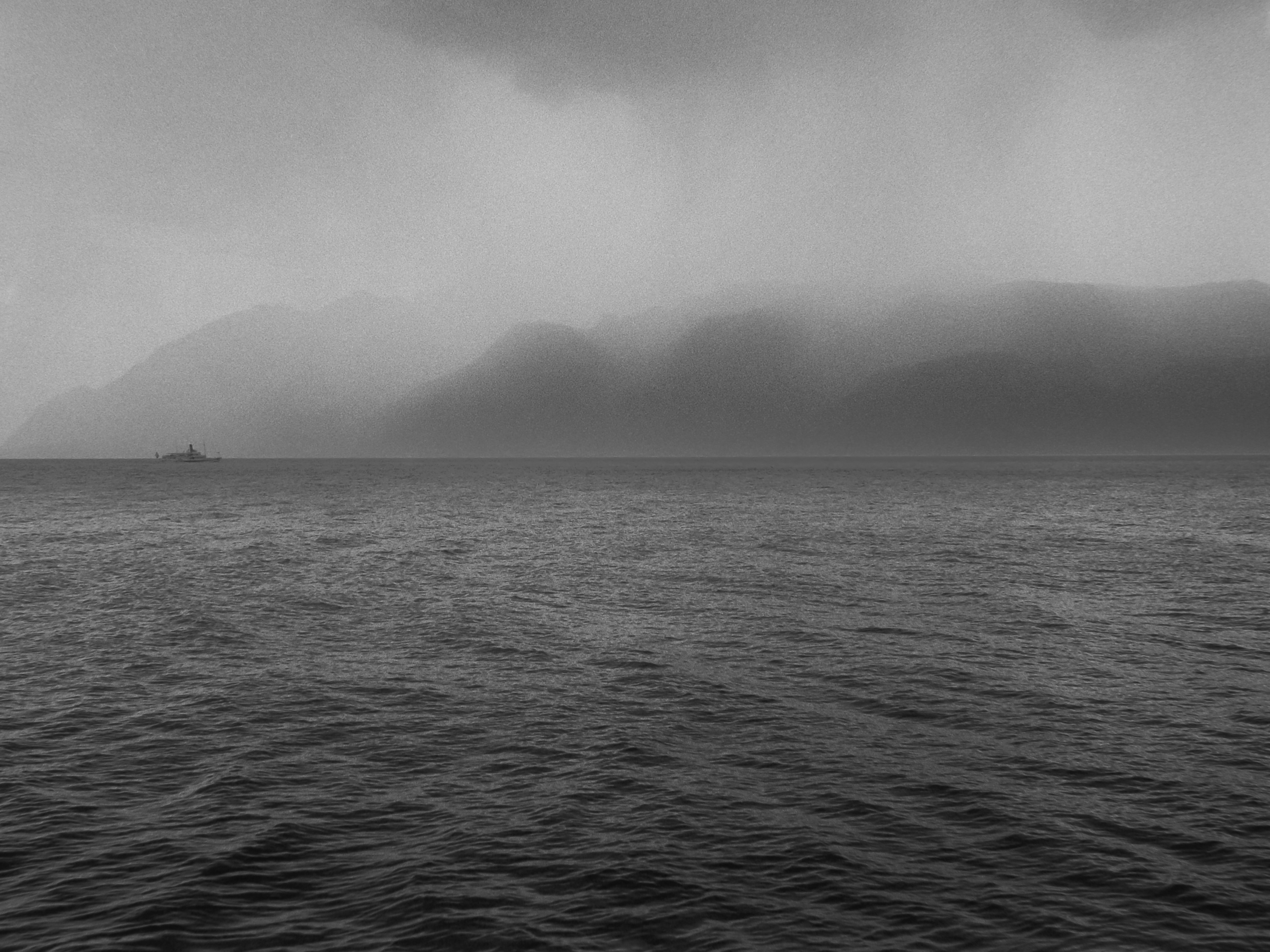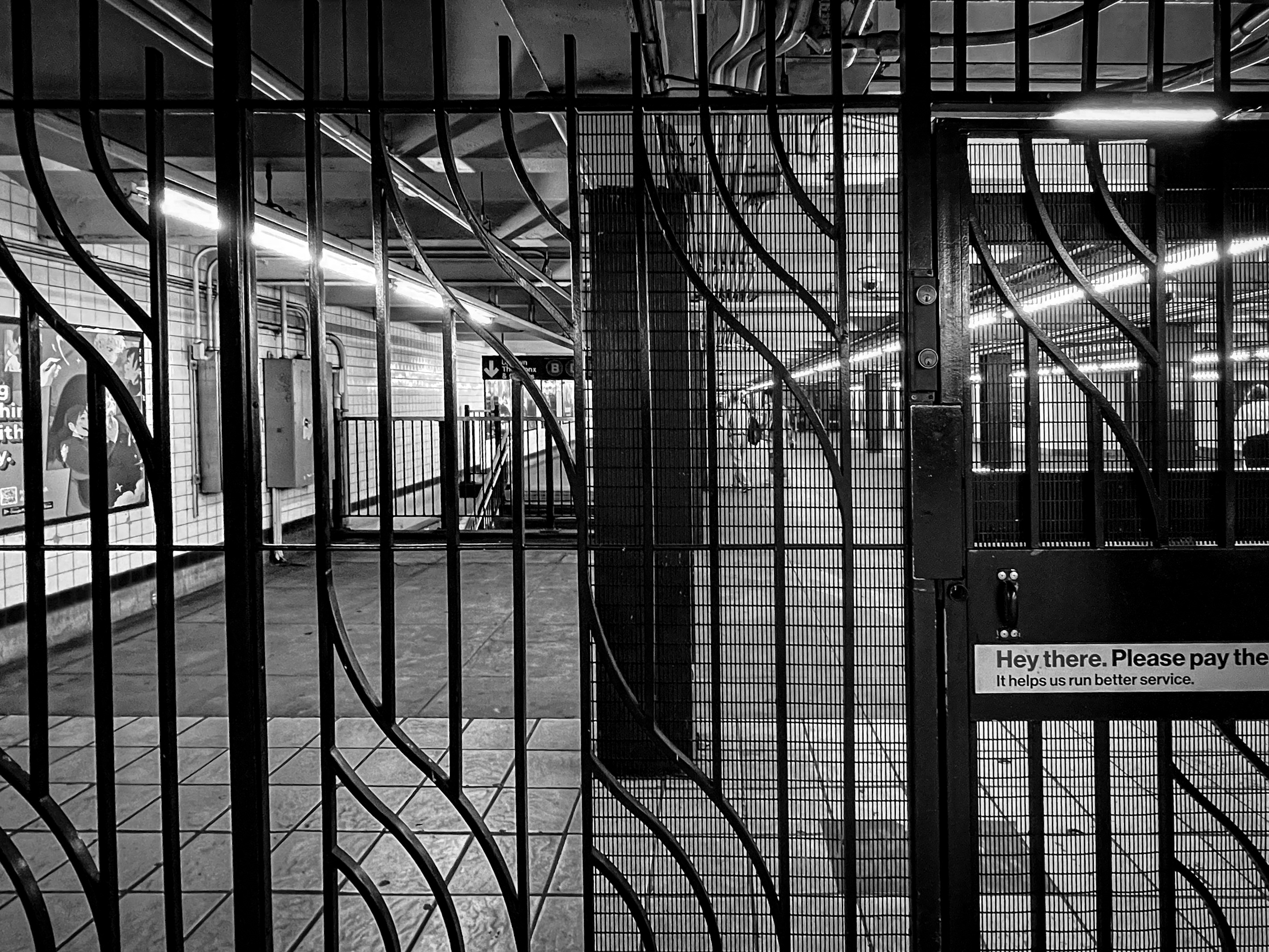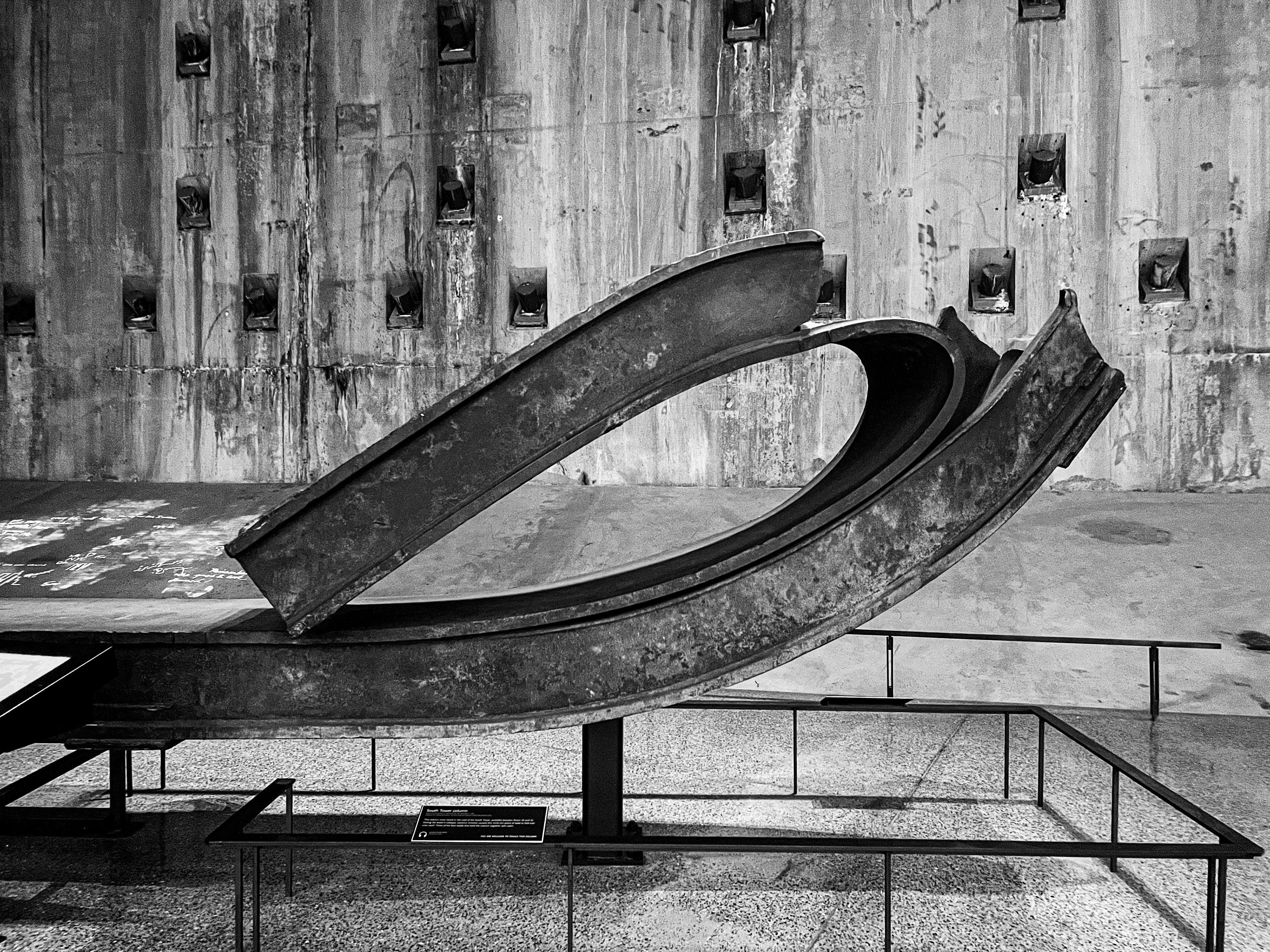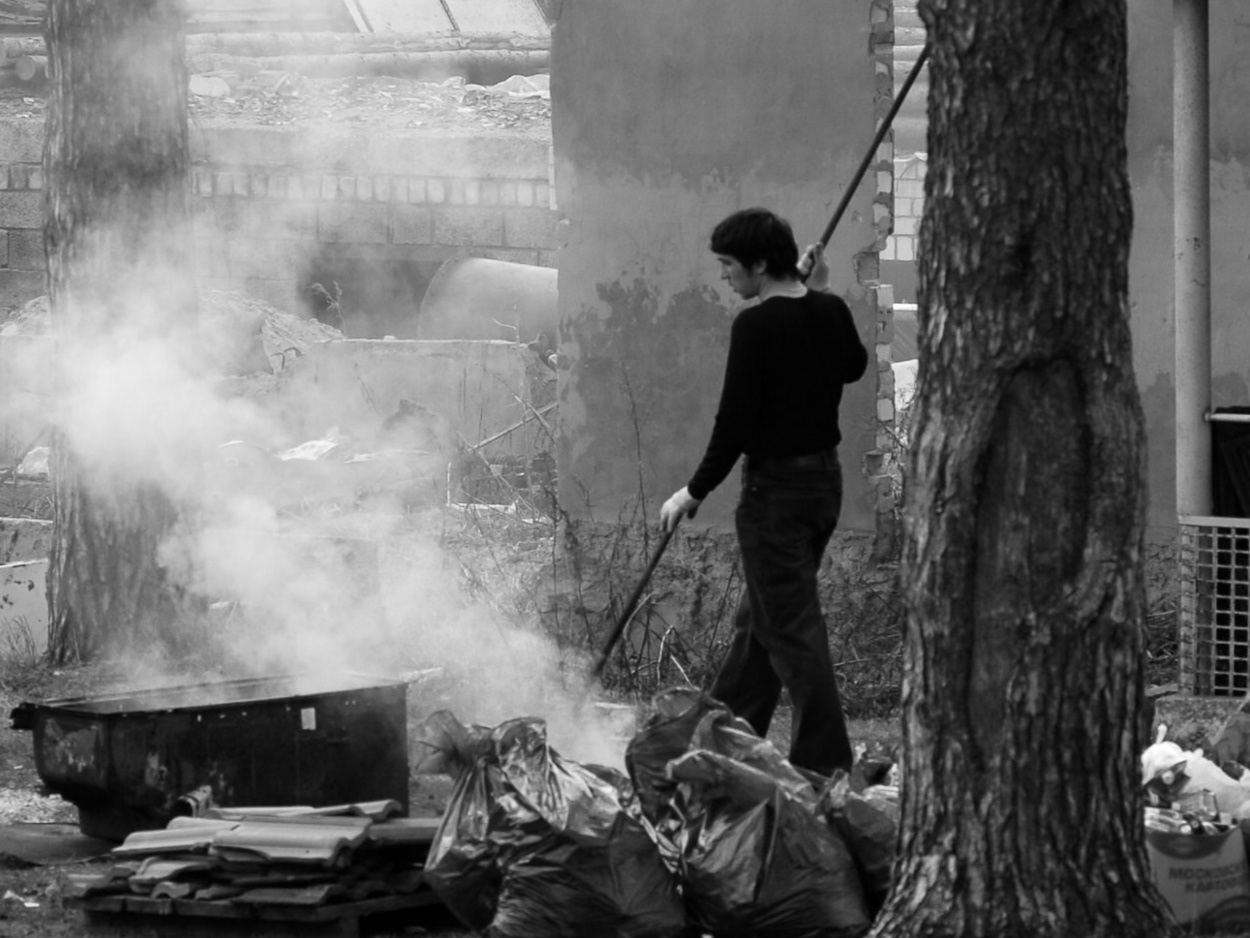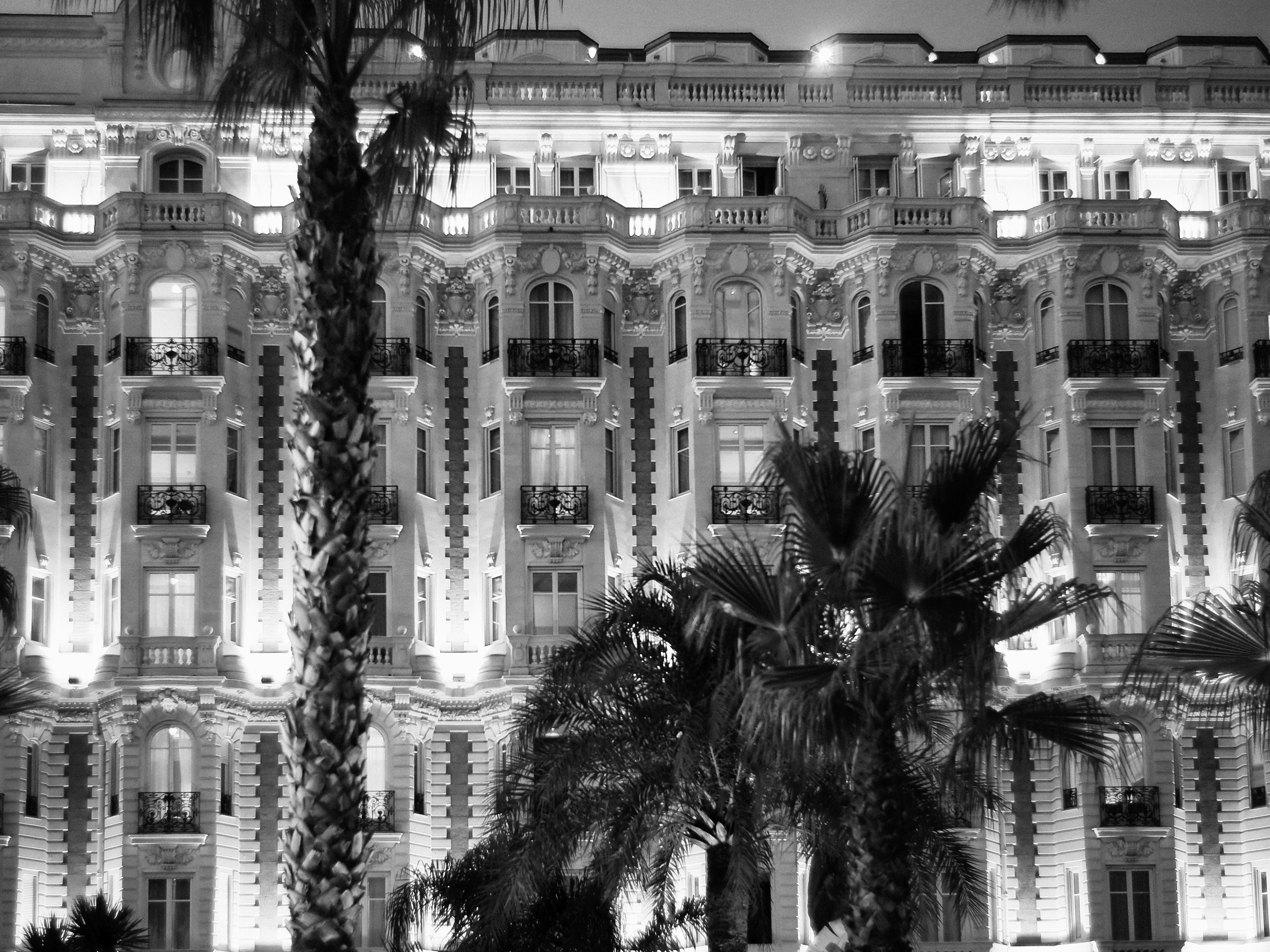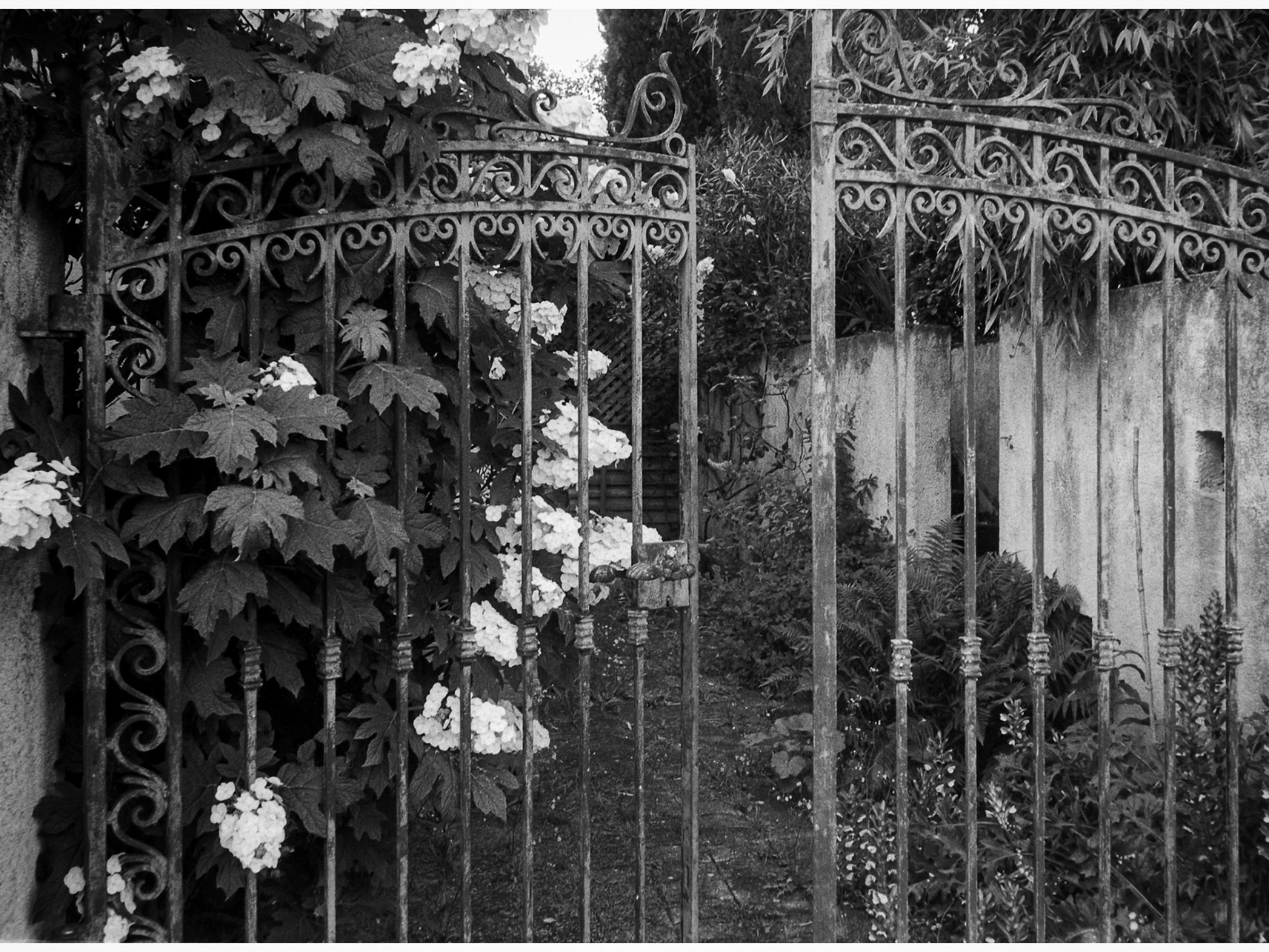One meter between her and him. Between their eyes, no distance.
They do not see Jacques, the photographer – not anymore.
Standing in the street, in front of the frame.
He came up to them, asked them permission to take their picture - instead of surreptitiously stealing the instant, snatching it. Like so many street-photographers.
Quebec, 1988. Vice-Versa magazine published the photo of a young woman, Pascale-Claude Aubry, sitting on some step, which resulted in the Canadian Supreme Court issuing a ruling on the right to one’s image, the right to privacy and freedom of expression. It created a precedent which holds to this day: taking photographs of people in public spaces is allowed, but if the people are identifiable, publishing the pictures without their consent is forbidden.
(photo de Gilbert Duclos, 1988, rue Sainte-Catherine, Montréal)
The Supreme Court’s decision is a landmark ruling - which photographers repeatedly challenge and endlessly try to circumvent.
In other countries, where the legislation appears to be vaguer, it does not apply.
I am no legal expert, yet it seems to me a recurrent strategy of street photography to shun identification, offering many pictures of people with their backs turned. A faceless picture does not interest me; it tells no story; it does not strike me; at worst it irritates me. Too bad. I move on to the next image, and the next again, until I see a picture like this one, a side-view of two people who have resumed their initial posture and discussion. They have forgotten all about the photographer standing close by, with his short 35 mm lens.
The picture is alive; it calls out to me; I immediately care about the two people. Folded hands, legs crossed – a withdrawn attitude that their faces contradict. She listens, he speaks. But I won’t drift into some corny romance; it would mean overlooking the place. They are sitting in the hall of a cinema. Not just any cinema. The Christine Cinéma Club, a legendary arthouse cinema in Paris, originally known as Action Christine, after the “Rue Christine” where it stands. Always a haunt for cinema devotees, like the two people on the photograph talking. She is deep into writing her first screenplay, for a film she intends to direct herself. She is stuck on some scene. On the shot, he’s talking, offering his view.
While my mind is wandering over the scenario, I gaze at the red neon overhead – its glow echoing that of the stool, reflected across the walls and ceiling, contrasting with the natural white stone of the Louis XIV carriage-doorway. It feels like being in Francis Ford Coppola’s iconic One From The Heart – his lavish and, as it turned out, ruinous project of building a life-size replica of Las Vegas drenched in artificial, saturated colors. Red everywhere - that very red which had struck me at the time and has stayed with me ever since my student days, when I saw that very film, in this same cinema, with I very precisely remember whom.
